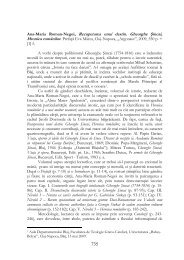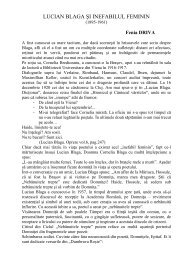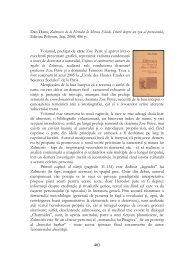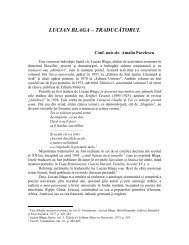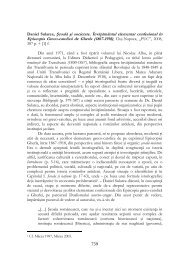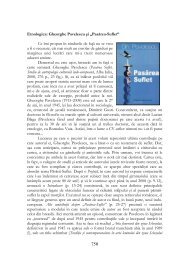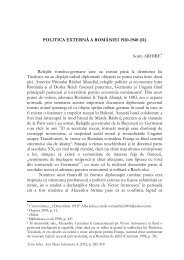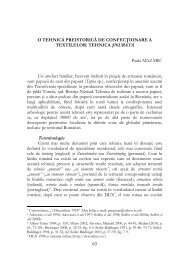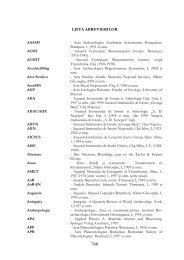MEDIEVAL ROWEL SPURS IN THE COLLECTION OF THE “IOAN ...
MEDIEVAL ROWEL SPURS IN THE COLLECTION OF THE “IOAN ...
MEDIEVAL ROWEL SPURS IN THE COLLECTION OF THE “IOAN ...
You also want an ePaper? Increase the reach of your titles
YUMPU automatically turns print PDFs into web optimized ePapers that Google loves.
Ovidiu Ghenescu<br />
the first half of the 14 th century mentiones villa de sub castro Petri, a village in<br />
the jurisdiction of the deanery of Sebeş. 49 F. Baumann identified that castrum<br />
Petri with the fortress 50 although there were historians who doubted this and<br />
placed the construction of the fortress in the second half of the 14 th<br />
century. 51 An idea subsequently taken over also by other researchers, 52 that<br />
the fortress of Săsciori and the castrum Petri mentioned in documents was<br />
one and the same, was readdressed by Th. Streitfeld, 53 and in time it became<br />
a certainty in historiography. 54 The same Th. Streifeld noticed that the<br />
pointed arch at one of the gate-towers provided by A. Amlacher as<br />
supporting evidence that the fortress was built at the turn of the 14 th to the<br />
15 th century, could be dated as far back as the second half of the 13 th<br />
century. 55 According to Gh. Anghel, an element supporting the dating of<br />
the fortress in Săsciori is the gate-towers placed inside the curtain wall and<br />
which cannot be dated in Transylvania later than the mid-14 th century. 56 The<br />
spur discovered in the fortress of Săsciori confirm the information in<br />
documents as well as the planimetry and art history data placing the<br />
beginnings of the fortification in the second half of the the 13 th century –<br />
the beginning of the 14 th century and identifying it thus with the castrum Petri<br />
documents mentioned.<br />
The first documented mention of the village of Dobârca dates from<br />
the beginning of the 14 th century. 57 The church in the vicinity of which the<br />
spur was found is a Romanesque construction of the 13 th century that in<br />
1481 was turned into a Gothic hall church. Round the year 1500 the church<br />
undergoes fortification works during which the old Romanesque tower is<br />
incorporated into a massive defense tower. There seems to have been<br />
another construction stage prior to this, a part of the old curtain wall being<br />
demolished and replaced with a polygonal enclosure when the new defense<br />
tower was built. 58 The spur kept in the collection of the “Ioan Raica”<br />
Marienescu 1901, p. 56-58); the presence of Dacian material has also been signalled in the<br />
fortress (Popa 2004, p. 67, footnotes 39, 42).<br />
49 DIR, C, veac XIV, I, p. 155, 265-266; DIR, C, veac XIV, II, p. 107, 324; DIR, C, veac<br />
XIV, III, p. 128, 141, 218.<br />
50 Baumann 1882, p. 32-33.<br />
51 Amlacher 1889, p. 34.<br />
52 Halaváts 1906, p. 357.<br />
53 Streitfeld 1939, p. 239.<br />
54 For the historiography of the fortress in Săsciori, with subsequent additions, see Ibidem,<br />
p. 239-240; Anghel 1986, p. 156; Rusu 1996, p. 149-150.<br />
55 Streitfeld 1939, p. 251.<br />
56 Anghel 1986, p. 159.<br />
57 DIR, C, veac XIV, I, p. 160.<br />
58 Fabini 1998, p. 150-151.<br />
250



